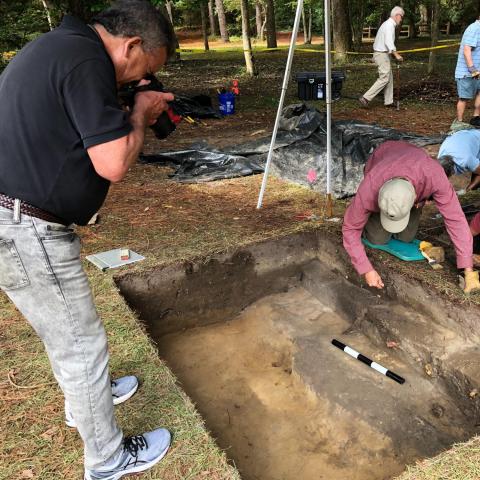
A commemorative quilt, donated to the National Park Service by the family of Dellerva Collins, will be on display at Fort Raleigh National Historic Site's visitor center from June 12 through June 30, 2022 / NPS Photo
From shooflies to flying geese, it is said secret messages like the ones sewn into a commemorative quilt helped guide runaway enslaved people on the perilous road to freedom in the 1860s. The commemorative quilt will be on display at Fort Raleigh National Historic Site’s visitor center Sunday, June 12 through Thursday, June 30.
“The quilt represents a remarkable piece of history that everyone should see,” said Jami Lanier, cultural resource manager for Fort Raleigh National Historic Site, Cape Hatteras National Seashore and Wright Brothers National Memorial. “It’s amazing how, despite the challenges, legends say enslaved African and African American people learned to improvise, communicating coded messages on what path to take and pitfalls to avoid as they began their journey to freedom.”
Sewn by a group of residents and donated to the National Park Service by the family of Dellerva Collins, the quilt is composed of 15 panels. The panels are a mixture of traditional quilt patterns that have been said to highlight escape directions and advice as well as representations of people and milestones on the freedom trail, including a drawing by Glenn Eure, depicting runaway enslaved people arriving by boat to join the Freedmen's Colony on Roanoke Island. The community, established during the American Civil War, included schools, homes and a church and eventually sheltered more than 3,500 residents. The colony is the subject of the First Light of Freedom Monument on the grounds of Fort Raleigh National Historic Site.
“A number of Freedmen’s Colony descendants participated in the quilt project,” said Lanier, “and I think that personal connection adds a depth of meaning to the exhibit and the conversation on this important topic.”



 Support Essential Coverage of Essential Places
Support Essential Coverage of Essential Places






